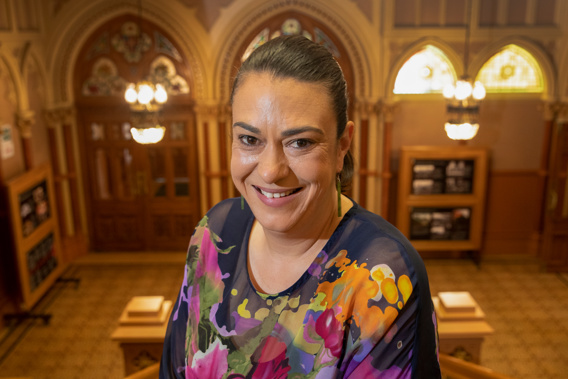
The Children's Minister has demanded Oranga Tamariki improve state-run community remand homes for youth offenders as statistics reveal nearly half of youth offenders escape them.
Between August 2020 and the following year, 40 per cent of youth offenders in remand homes awaiting trial or serving punishments ran away without permission. In Auckland alone, 49 per cent of young offenders fled.
The homes are across the country in regular suburban streets and are subject to no restraint policies according to Blue Light Youth Development's Brendon Crompton.
"When a judge says to a young person 'you'll be remanded and need to stay there', the young person will follow those instructions and clearly, a lot of those don't," he told Newstalk ZB.
"The staff in those homes, be it a provider or Oranga Tamariki staff, they have a no-restraint policy - so the kids aren't going to be stopped, they know that."
Crompton said the system works in theory, providing offending youngsters an alternative to youth prisons. He pointed out the kids need the homes as nobody in the wider whānau was able to support the offenders' needs.
He said the offenders were often in a vulnerable space.
"They've burned their bridges and their family is chaotic, so social workers say 'well, they can't go [into youth justice facilities] because they keep offending, let's put them in a state-run place'," said Crompton.
"But if the kids know they can walk out and they're addicted to nicotine, alcohol, drugs or hooking up to crime, they walk out the front door."
Newstalk ZB Plus brought the concerning statistics to Children's Minister, Act’s Karen Chhour - who said that since November last year, she had been clear with Oranga Tamariki that improvements need to take place.
She said specific changes were needed to the way the homes are managed, particularly around areas like standardised processes, staff capacity and their capabilities.

However, Chhour did not dismiss the theory behind the homes.
"I am advised that the young people in the community remand-home facilities are monitored to the best of the ability that the law will allow," she said.
"These homes provide a better environment for young people going through the youth justice system to get the help they need while staying connected to their family, whānau and community, maintaining connection with support services."
The community homes, of which there are a little over a dozen around the country, are intended as an alternative to the notorious secure youth justice facilities such as Korowai Manaaki in Auckland, which have been the source of widespread controversy in recent years amid reports of sexual misconduct by workers, staff-organised fights, brutal assaults and repeated instances of young people climbing on to roofs for extended periods.
The Herald has reported that the former Children’s Commissioner, Judge Frances Eivers repeatedly called for the secure youth justice facilities to be shut down.
As Crompton pointed out, the homes are meant to be a final solution - meaning kids would start out with being offered the chance to complete a programme with a youth agency such as Blue Light, under threat of ending up in a residence if they chose not to.
"But there's a moment of time between that and going to [a] residence when they're out on the street - and a lot of them re-offend," he told ZB.
"From a social-work perspective, it should work - because we're giving a young person [something they're] not experiencing in their own house, which is care, three meals a day and programmes...but teenagers are impulsive and they often don't think 'what is best for me in this space' so they walk out the front door."
A review of Oranga Tamariki youth residences and a sample of community homes, by change and culture consultant Debbie Francis and former police Inspector Paul Vlaanderen, was released in September last year.
One of the issues identified by those involved was a lack of clear standard operating procedures (SOPs) across the homes.
“We were shocked to discover the inconsistencies in practice and approach of SOPs in different homes and residences, even within the same region or under the same management spans of control,” they wrote.
The procedures appeared to be informed “more by instinct and practical experience than by evidence-based practice, evaluation and review, or policy and regulation,” the authors said.
Take your Radio, Podcasts and Music with you









